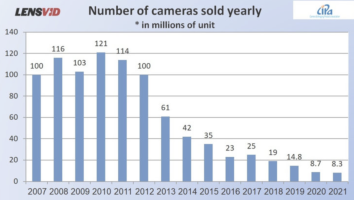L
Loswr
Guest
Canon updated the R6 'early' and while that may be the start of a trend, it's really hard to support that with a single data point. There's still no R1, they did not update the R5 that was launched alongside the R6. The rapid update cycle typically applies more at the low end than at the high end, especially since it's those models that are in 'competition' with smartphones at the price level. The xxxD DSLRs were updated annually for many years, while the xxD and xD updates were much less frequent. Most likely, the same will be true for the R series.You don't seem to understand. It has less to do with construction and more to do how today's cameras market looks through consumers's eyes (in a world dominated by smartphones) and also how quickly newer parts are available for manufacturing. Sony has seemed to adopt to this quite well, and I don't see why all the others would not follow to compete, probably in a middle-state that is not as quick as it was in the early days or mirrorless but also not as slow as it was in the DSLR era.
.
MILCs are more like smartphones, e.g. upgrading them frequently is more incentivized by some new technology, whether that's a new sensor (with smartphone-like processing features like handheld HDR), processor (AI, better energy efficiency), new batteries, new screens. (That's something Sony can do any time, or in Canon's case they always make some tweaks to their bodies, so they could add things like full-size HDMI)
The R1 is likely to be the first representative of the new generation, but after that, some of its features will start to tickle-down to the rest of the range even though this generation is still quite new.
Consider that Canon has steadily gained MILC market share on Sony and last year they overtook Sony as the #1 MILC brand in Japan. I don't follow Sony closely, but if as you say they have had a rapid update cycle while Canon has kept to a slow introduction/update of their MILCs, and Canon has overtaken Sony anyway...why would Canon change their strategy since it's evidently been successful?
Yes, MILC sales are finally growing slightly. Yay. When you look back at the past, it's clear that MILCs have a long way to go to make up for the industry losses...It's more about the present than the past...

Camera sales increase with mirrorless lenses growing in popularity - IFA Newsroom
Data provided by CIPA shows that camera sales, especially for mirrorless models, are increasing with heightened demand around the world.news.ifa-berlin.com

Mirrorless cameras set to drive market growth - IFA Newsroom
The forecast comes in ResearchandMarket.com’s latest report entitled "Mirrorless Camera Market - Forecasts from 2021 to 2026".news.ifa-berlin.com

Upvote
0
